What Is UX Design?
User Experience (UX) design focuses on building a seamless and enjoyable experience for users navigating an e-commerce site. A well-structured user experience is crucial for helping visitors find products, make informed purchase decisions, and complete transactions without friction.
A great UX design ensures an e-commerce site is functional and aesthetically pleasing. It enhances usability by integrating UI elements, straightforward navigation, and intuitive layouts. Effective design strategies reduce frustration, guiding users smoothly through the conversion funnel.
What Are The Important UX Principles?
Several key UX best practices enhance the shopping experience:
Clarity: A new user must be able to browse through the homepage and product page and checkout process without difficulty. Visitors should quickly understand where they can see the cart alongside the search box and the navigation menu upon first viewing a website.
Simplicity: The buying process should contain only essential design elements which prevent shoppers from being distracted. Top e-commerce sites normally present a simple unburdened user interface design. The core shopping functions will be the main emphasis of the design structure.
Consistency: Maintain uniformity across the site, including fonts, colours, and UI elements. A cohesive design helps build familiarity and trust, ensuring users find products effortlessly.
Accessibility: The essential requirement is mobile device optimization. A successful e-commerce site needs optimization for all user devices including desktop PCs along with tabs and mobile phones. The confirmation of usability will be tested across all visiting users. Accessible e-commerce websites require screen reader functionality together with keyboard access points as well as high-contrast interfaces.
Feedback: Provide real-time responses to user actions, such as error messages, success notifications, and progress indicators. For example, when adding an item to the cart, a loading animation reassures users that the action was successful.
Trust: Applicants build confidence through trust signals which include security badges together with verified reviews and return policies. Cart abandonment prevention occurs when merchants highlight to customers their secure checkout procedures augmented with SSL certificates.
Personalization: Leverage data to tailor recommendations and help users find what they need faster. Features like “Recently Viewed” or “Recommended for You” increase engagement and conversions.
Scannability: Most users skim through pages instead of reading every detail. To make information digestible, use bullet points, short paragraphs, and high-quality product images.
Speed Optimization: Site speed directly impacts conversion rates. Optimize page load times by compressing images, using lazy loading, and minimizing unnecessary scripts. Faster e-commerce sites encourage more conversions and lower bounce rates.
Mobile-First Approach: Since most shoppers browse on mobile devices, design pages with a mobile-first strategy. Ensure that buttons are large enough to tap quickly, forms are user-friendly, and content adjusts seamlessly to different screen sizes.
Visual Hierarchy: Users need guidance through content placement planning. Users should find essential elements easily because their prominence aids user interactions.
Error Prevention and Recovery: Ensure users don’t encounter unnecessary obstacles. If an error occurs, provide clear instructions on how to fix it instead of displaying vague error messages.
Engagement Features: Add interactive elements like product videos, 360-degree views, and live chat support to enhance the shopping experience and answer real-time user queries.
By following these UX best practices, an e-commerce site can provide a seamless and engaging experience that improves conversion rates and reduces friction in the shopping experience.
6 E-commerce UX Design Best Practices
1. Website Discovery
When customers land on your e-commerce site, the first impression matters the most. They should be able to understand precisely what you’re offering, and that begins with effective website discovery. This process hinges on several aspects of design and functionality.
Position the Brand Clearly
Brand identity acts as the initial instrument for influencing website visitors. A professional first impression depends heavily on placing your header, logo alongside your brand message properly. The essential components of your business must appear in these elements. Present your brand design elements together with message tone that accurately showcases unique features of your merchandise regardless of your catalogue type.
Website users feel more confident when they encounter the same branding elements throughout different pages. Your website users should encounter identical visual elements and textual signatures throughout your homepage as well as product pages and checkout process. Brand credibility strengthens when different elements become systematically unified. Every declaration of affordable prices must appear easily visible from the homepage since this is where potential customers first arrive.
The arrangement of the logo requires equal attention to detail. The logo must appear in a common spot at the top left section as a clickable link that directs users to the main homepage. Customers feel comfortable while using the system because of recognizable interface elements. Your brand message needs to be expressed using a few words which should both tell your story clearly while also remaining direct. Users can verify they have reached the correct web page because of this strategy.
Show Relevant Calls to Action
CTAs serve as decision points that either enhance or hinder the user journey. Strategic signals guide customers toward their successive shopping steps. Digital customer requests guide users to take action through subscription or category exploration or completion of purchase transactions.
Ensure that your CTAs are designed with urgency and clarity. Action-oriented language such as “Shop Now,” “Add to Cart,” or “Get 10% Off” encourages immediate interaction. Position CTAs throughout the site in prominent places. For example, on the homepage, there can be banners or buttons that direct users to product categories. On product pages, the CTA should focus on purchasing (“Buy Now”) and be easy to spot without scrolling.
2. Tailor Landing Pages for SEO
Any e-commerce website needs landing pages as key elements that directly influence how search engines rank websites.
Optimized for SEO
Every landing page must include aspects that optimize SEO performance. Relavant keywords should occur naturally inside headings and subheadings and body content text. Present high-quality images and attach appropriate alternative text which accurately describes the displayed products. The implementation of relevant keywords gives users improved search engine visibility while providing benefit to users who need assistive accessibility tools. E-commerce focuses primarily on mobile traffic so landing pages require mobile optimization to succeed. A mobile site with simple navigation guides users through an improved experience resulting in better SEO position.
Navigation features should be crystal clear and users need to find keyword terms in their navigation paths. A well-structured menu system should be present on the site because it enables users to locate content without delay. An online clothing store should display fundamental categories including “Men’s Wear” alongside “Women’s Wear” and “Sale” in a visible manner.
The design of every landing page needs to have a defined main objective. The content must align with the particular product when the page intends to promote it. A product launch page must demonstrate the features along with advantages and pricing information of the product being showcased. Subject pages that offer suitable related product recommendations increase the likelihood of further customer purchases. Visitors stay engaged through a quick return option that leads them to the homepage or other product categories.
3. Product Search and Browse
An intuitive and efficient buying process stands vital when customers seek products through their search or product category options. People visiting a website need easy access to their desired products regardless of whether they need to use a search bar function or peruse product categories.
Provide On-site Search
The on-site search function represents an essential UX element that e-commerce platforms require to deliver. Every page should feature the search bar located at its upper part to boost usability. The search function needs to resolve regular problems in spelling and deliver results for partial search queries. Features such as auto-complete and spelling correction implemented within a site search reduce frustration while improving product search efficiency.
The combination of machine learning and natural language processing within artificial intelligence enhances search usability. The search function should show dresses as a result when customers type “summer dress” and provide related products such as sandals or accessories.
Inspire Visitors in Discovery Mode
Every website receives visitors who do not have a specific idea about their interest when they land on the page. The shopping process for these consumers requires inspiring guidance to make purchase decisions. A browsing experience based on curated collections and featured products and personalized recommendations delivers an individual preference-oriented experience to visitors.
For instance, you could feature a “Trending Products” section that displays items that have been recently popular with customers or showcase seasonal items like “Summer Essentials.” You can also incorporate personalized recommendations based on browsing history or past purchases. This can be particularly effective on product category pages or home pages.
Displaying “Related Products” or “Customers Also Bought” sections on product pages is another powerful way to inspire visitors. By guiding shoppers to explore more options, you increase the chances of additional purchases, ultimately boosting revenue. These sections are great opportunities to cross-sell, improving the average order value.
Use Filters and Faceted Search
Faceted search provides customers with a system to narrow search results using criteria that include parameters like size and price alongside color options. The ecommerce sites that offer many different products can find benefit in this feature.
When searching for shoes online customers can view filtered results according to shoe color, size and material selection which helps narrow choices to meet their requirements. The implementation of advanced filters enhances user experience by letting customers find results that matter most. Result refinement capabilities through customer ratings and stock availability option create a greatly enhanced shopping process.
4. Product Page
The conversion happens on the product page, so its design is crucial for user experience. Every product page should be carefully crafted to facilitate purchases.
Prominently Display Primary Actions
The “Add to Cart” or “Buy Now” buttons should remain easily visible as these represent the key actions on a product page. Your primary CTAs should appear with large buttons in contrasting colors to make them highly noticeable to every visitor.
Users can take action easily because the buttons reside directly below the product image and description section. A sticky CTA button should appear as users scroll down since this allows them to add items to their cart without returning to the top of the page.
Provide Detailed Product Information
Shoppers need as much information as possible to make an informed decision. Ensure your product pages include detailed descriptions, specifications, size guides, material descriptions, and care instructions. High-quality images from multiple angles should be available to give customers a complete view of the product. In the case of apparel or footwear, a zoom-in feature can help users inspect details like fabric texture or stitching.
Videos showcasing the product in use, 360-degree views, and customer testimonials can add value. All these elements work together to create confidence in the product, which increases the likelihood of conversion.
Build Customer Trust
Customers feel confident purchasing online when stores provide clear displays of their warranties and customer support channels along with return policies in a prominent area. Customers will feel more comfortable when businesses clearly state shipping delays and payment details.
The establishment of trust requires security badges to serve as an important component. The checkout process requires you to show SSL certificates while providing payment security guarantees to customers.
Add Social Proof
The proof established through social validation functions as a leading force for customer influence. The credibility of your business increases when you show reviews alongside testimonials together with first-hand content produced by customers that demonstrate product use.
Consider integrating a review system that allows users to rate products, share their experience, and upload images. Positive reviews can serve as endorsements, often swaying new customers to make a purchase.

5. Shopping Cart
Moving forward from cart addition users need to access a smooth checkout process to finalize their purchase.
Show a Clear Order Summary
A transparent cart procedure helps decrease the number of abandoned shopping carts. Users should see essential cart information which includes the product name combined with price details along with quantity count and shipping expenses. Accommodate discount displays for clients to reinforce their perception of high value.
The ability for customers to modify cart items via quantity changes or item deletion belongs to basic shopping requirements. Online shoppers gain advantages from a fundamental shopping cart system which shows them their active purchases.
6. Checkout
The checkout process can often be the make-or-break point in e-commerce. A streamlined, user-friendly checkout process reduces friction and ensures more completed transactions.
Let Users Check Out as Guests
Forcing users to create an account can be a significant barrier to completing a purchase. Allowing guest checkout while providing the option to create an account afterwards ensures you don’t lose potential customers.
Provide Visual Feedback During the Checkout Process
A progress bar showing the steps remaining in the checkout process can help reduce anxiety and confusion. This gives customers a clear sense of how far along they are and what to expect next.
Use Common Payment Methods
Multiple payment options like credit/debit cards, PayPal, Apple Pay, and Google Pay, can increase conversion rates by accommodating customer preferences.
7. Order Confirmation
Once a customer has completed their purchase, the order confirmation page is the final touchpoint in the process.
Display a Detailed Order Confirmation
A detailed order summary, including product details, payment method, and delivery information, assures customers that their purchase was successful. Adding a “Thank You” message and a discount for the next purchase can encourage repeat business.
Send Order and Shipping Updates via Email
The continuous provision of order status updates through emails enables businesses to build satisfied customers because customers stay informed about shipping and tracking steps. When customers receive ongoing process updates about their shipment they build trust in their buying decision while increasing the likelihood of repeat business.
Final Thoughts
Follow rigorous eCommerce UX best practices which delivers improved user experience together with decreased purchasing hurdles yet increased transaction rates. Your website turns online visitors into faithful customers thanks to a combination of usability features which build trust while providing intuitive navigation.
Need help with UX design? Achieve high-conversion online commerce by working with eCommerce Web Design Agency. E-commerce UX improvement runs as an everlasting cycle. By using data insights to evaluate user behavior you can regularly test the platform and optimize every part of your e-commerce website for maximum performance. Retailers who adopt these UX best practices will improve customer shopping experience and boost conversion rates and generate greater revenue streams.



